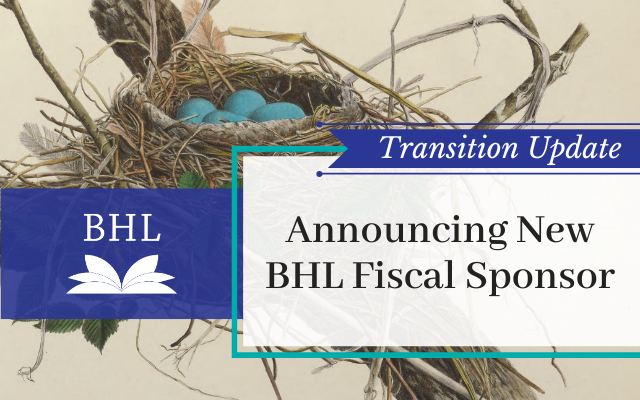The latest revision of the BHL Data Model is now available for review.
Continue reading
BHL Transition Update #5
From Call for Support to Next Steps

BHL Transition Update #4
Welcoming CLIR as BHL’s New Fiscal Sponsor

BHL Transition Update #3
Gaining Momentum

The latest revision of the BHL Data Model is now available for review.
A revised diagram & description of the BHL hardware architecture is available.
Note: This is a revision of our previous blog post that described our process for harvesting digitized books from the Internet Archive. Their query interface changed, and we’ve updated our process & documentation accordingly.
WonderFetch is the term used for prepopulating the Internet Archives metadata forms (so named because it is more wonderful than regular z39.50 fetching). Using WonderFetch, partner libraries can populate fields with data that would not normally be populated as part of the standard IA process, and then store those values in the foobar_meta.xml file alongside each scanned item in the IA repository. Part of the impetus for implementing WonderFetch was not just to automate the inclusion of volume and issue information for serials – which was important – but to also capture due diligence, rights, and licensing information related to each item. (And yes, the TM is a little joke! No rights reserved).
Following some excellent suggestions gathered at a recent Encyclopedia of Life meeting, we’ve made changes to our Google Maps browse interface. To recap, we take Library of Congress Subject Headings and geocode and map them using the Google Maps API (details here).
Learn more about recent updates to the BHL portal.
Learn more about the BHL harvest process from Internet Archive.
BHL’s existence depends on the financial support of its patrons. Help us keep this free resource alive!
The Biodiversity Heritage Library (BHL) is the world’s largest open access digital library for biodiversity literature and archives. Headquartered at the Smithsonian Libraries and Archives in Washington, D.C., BHL operates as a worldwide consortium of natural history, botanical, research, and national libraries working together to digitize the natural history literature held in their collections and make it freely available for open access as part of a global “biodiversity community.”
Sign up to receive the latest news, content highlights, and promotions.
Subscribe NowSubscribe to the blog RSS feed to stay up-to-date on all the latest BHL posts.
Access RSS Feed